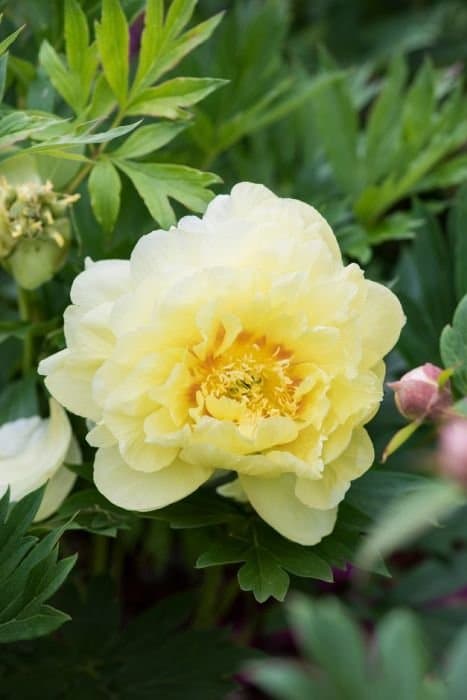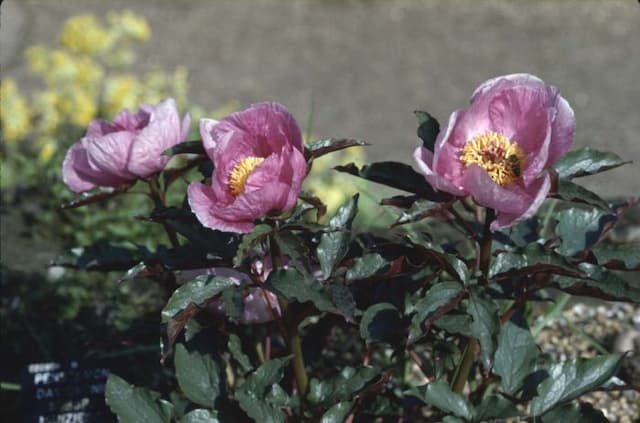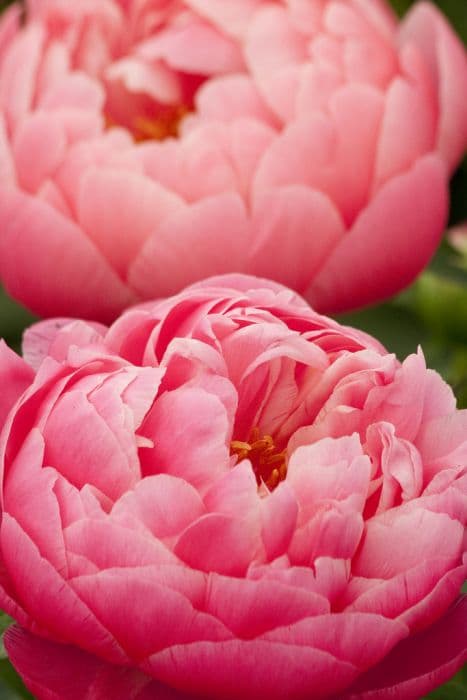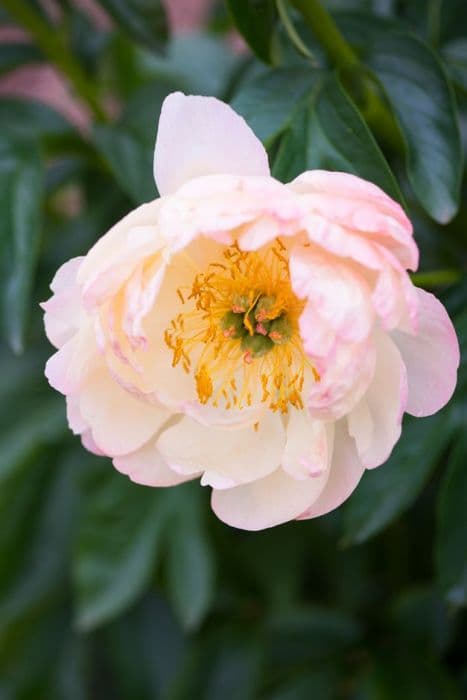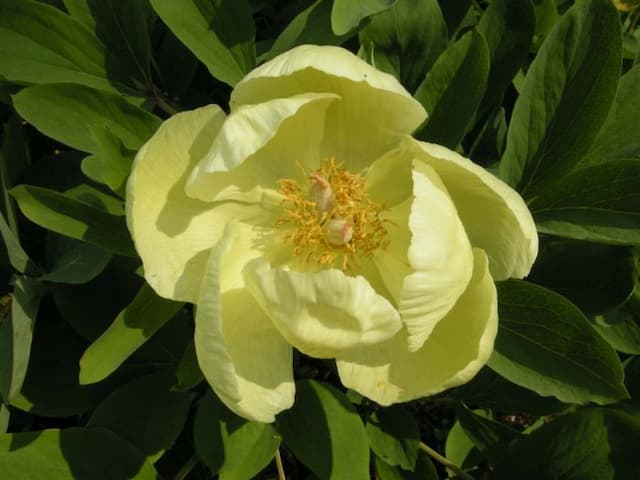Peony 'Doctor Alexander Fleming' Paeonia lactiflora 'Doctor Alexander Fleming'

ABOUT
'Doctor Alexander Fleming' is a clump-forming herbaceous perennial to 90cm, with dark green, divided foliage and fragrant, fully double, pink flowers from early to mid-summer
About this plant
 Names
NamesSynonyms
Peony, Chinese Peony.
Common names
Paeonia lactiflora 'Doctor Alexander Fleming'.
 Characteristics
CharacteristicsLife cycle
Perennials
Foliage type
Deciduous
Color of leaves
Green
Flower color
Pink
Height
2-3 feet (0.6-0.9 meters)
Spread
2-3 feet (0.6-0.9 meters)
Plant type
Herb
Hardiness zones
3-8
Native area
Asia
Benefits
 General Benefits
General Benefits- Aesthetic Appeal: Paeonia lactiflora 'Doctor Alexander Fleming' is prized for its large, double pink flowers that add striking visual interest to the garden.
- Fragrance: The plant is known for its delightful fragrance, which can add a pleasant scent to gardens and outdoor spaces.
- Attracts Pollinators: It is attractive to bees and other pollinators, which are essential for the environment and the pollination of many other plants.
- Long-lived Perennial: Once established, peonies can live for many years, often outliving the person who planted them.
- Seasonal Interest: Peonies bloom in late spring to early summer, providing a seasonal show of color when many spring flowers are fading.
- Low Maintenance: They are relatively low maintenance once established, requiring minimal care beyond occasional watering and fertilizing.
- Deer Resistant: Peonies are typically resistant to deer, which can be particularly beneficial in areas where deer browsing is a problem.
- Cut Flowers: The blooms make excellent cut flowers, lasting well in vases and floral arrangements.
- Traditional Use in Landscaping: They are a traditional favorite in cottage and formal gardens, often used in borders and as focal points.
 Medical Properties
Medical Properties- This plant is not used for medical purposes.
 Air-purifying Qualities
Air-purifying QualitiesThis plant is not specifically known for air purifying qualities.
 Other Uses
Other Uses- Perfume Production: The flowers of Paeonia 'Doctor Alexander Fleming' have a delightful fragrance that can be extracted for use in making perfumes.
- Wedding Decor: Peonies are highly prized for their lush, full blooms and are often used in bridal bouquets and wedding decorations for their romantic appearance.
- Culinary Decoration: The petals of peonies can be crystallized or used fresh to decorate cakes and desserts, adding elegance to culinary presentations.
- Fabric Dye: Historically, peonies have been used to create a natural dye for fabrics, imparting gentle hues to textiles.
- Photography Sessions: The striking flowers of 'Doctor Alexander Fleming' make them an excellent subject for garden photography and floral artistry.
- Garden Therapy: Engaging with peonies through gardening can serve as a form of therapy, promoting relaxation and stress relief.
- Educational Resource: Peonies can serve as an educational tool, teaching about plant biology, hybridization, and horticulture.
- Live Art: Using peonies, including 'Doctor Alexander Fleming', in live painting sessions or floral workshops celebrates their beauty and contributes to art education.
- Cultural Celebrations: In some cultures, peonies symbolize prosperity and honor, making 'Doctor Alexander Fleming' a variety used in relevant festivals and cultural events.
- Seasonal Indicator: As 'Doctor Alexander Fleming' peonies are spring bloomers, they can be used to indicate the start of the season in gardening circles and seasonal celebrations.
Interesting Facts
 Feng Shui
Feng ShuiThe Peony is not used in Feng Shui practice.
 Zodiac Sign Compitability
Zodiac Sign CompitabilityThe Peony is not used in astrology practice.
 Plant Symbolism
Plant Symbolism- Healing: Named after Dr. Alexander Fleming, the discoverer of penicillin, this peony variety symbolizes healing powers and medical breakthroughs.
- Romance and Love: Peonies, in general, are commonly associated with romance, passionate love, and marital bliss, making them popular flowers for weddings and anniversaries.
- Wealth and Honor: Traditionally in Chinese culture, peonies symbolize riches, prosperity, and honor, often seen as an omen of good fortune and high social status.
- Beauty: The lush, full blooms of the peony represent unmatched beauty and are often associated with feminine allure and charm.
- Bashfulness: In Victorian times, the peony was a symbol of bashfulness due to the myth that nymphs would hide within its petals.
- Compassion: Peonies may also symbolize compassion, with their generous and rounded blooms representing the human capacity for empathy and kindness.
 Water
WaterPeonies, including the 'Doctor Alexander Fleming' variety, prefer a consistent watering schedule to ensure the soil remains evenly moist but not soggy. During the growing season, provide about 1 inch of water per week, either through rainfall or supplemental watering. When watering, it's best to do so early in the day to allow the foliage to dry out, reducing the risk of fungal diseases. In the absence of rain, this may equate to roughly 0.62 gallons for a small peony plant or up to 2.5 gallons for a larger bush, spread out over a week, always considering the soil moisture levels before adding more water.
 Light
LightPeonies like 'Doctor Alexander Fleming' thrive in full sun conditions, receiving at least 6 to 8 hours of direct sunlight per day. They can tolerate light afternoon shade but prefer a location that provides ample morning sunlight which is crucial for vibrant bloom production and strength. Ensure the planting spot is well away from competing trees and shrubs, as peonies compete poorly for light and nutrients.
 Temperature
TemperatureThe 'Doctor Alexander Fleming' peony flourishes in temperatures that are typical of temperate regions. These plants do well with winter chill and can survive winter lows down to about -20 degrees Fahrenheit, although they are most content in zones 3-8. The ideal growing temperature for peonies ranges from 65 to 75 degrees Fahrenheit during the day and cooler at night. High temperatures and humidity might impact blooming and overall health, so providing some afternoon shade in hotter climates can be beneficial.
 Pruning
Pruning'Doctor Alexander Fleming' peonies do not require extensive pruning, but deadheading spent blooms after flowering encourages plant health. In late fall, once the leaves have died back, cut the peony stems down to about 3 inches above the ground to prepare for winter and help prevent overwintering diseases. Pruning is typically done annually, following the plant's natural dormancy cycle.
 Cleaning
CleaningAs needed
 Soil
SoilPeonies like well-drained soil enriched with compost. The ideal pH for Peony 'Doctor Alexander Fleming' is 6.5 to 7.0. A mix containing two-thirds garden soil and one-third compost or well-rotted manure works best.
 Repotting
RepottingPeonies, including 'Doctor Alexander Fleming', rarely need repotting and are typically planted in the ground. They can live in the same spot for many years without necessitating division or repotting.
 Humidity & Misting
Humidity & MistingPeony 'Doctor Alexander Fleming' is tolerant of a range of humidity levels and does not have specific humidity requirements. They perform well in the ambient outdoor humidity.
 Suitable locations
Suitable locationsIndoor
Not ideal to grow Peonies like 'Doctor Alexander Fleming' indoors.
Outdoor
Plant in full sun with rich, well-drained soil.
Hardiness zone
3-8 USDA.
 Life cycle
Life cycleThe Paeonia lactiflora 'Doctor Alexander Fleming', commonly known as Peony 'Doctor Alexander Fleming', begins its life cycle when seeds are sown in the soil or when divisions of mature plants are transplanted. After a period of cold stratification, which breaks seed dormancy, germination occurs in spring, and the plant develops a small set of leaves the first year while establishing a strong root system. In the following years, the peony grows into a larger bush with compound, deeply lobed leaves, and by the third or fourth year, it starts to produce large, fragrant pink flowers during late spring to early summer. Once flowering is finished, the plant enters a period of energy accumulation, storing nutrients in the roots for the next season. As the weather cools and winter approaches, the peony dies back to the ground, remaining dormant through the winter months. With the return of warmer temperatures in spring, the peony begins its cycle anew, sending up fresh shoots that will grow, mature, and eventually bloom, continuing its perennial life cycle.
 Propogation
PropogationPropogation time
Late autumn
Paeonia lactiflora 'Doctor Alexander Fleming', commonly known as Peony 'Doctor Alexander Fleming', is frequently propagated by division, which is best carried out in the fall when the plant has become dormant. Dig up the peony clump with care, trying not to damage the roots. The clump should then be cleaned of soil and the roots should be divided using a sharp knife, ensuring that each section has at least three to five eyes, which are the potential growth points for the next year. These divisions should be replanted promptly at a depth where the eyes are covered with approximately 1 to 2 inches (2.5 to 5 centimeters) of soil. Adequate spacing of about 2 to 3 feet (60 to 90 centimeters) between the plants will allow for air circulation and growth.
